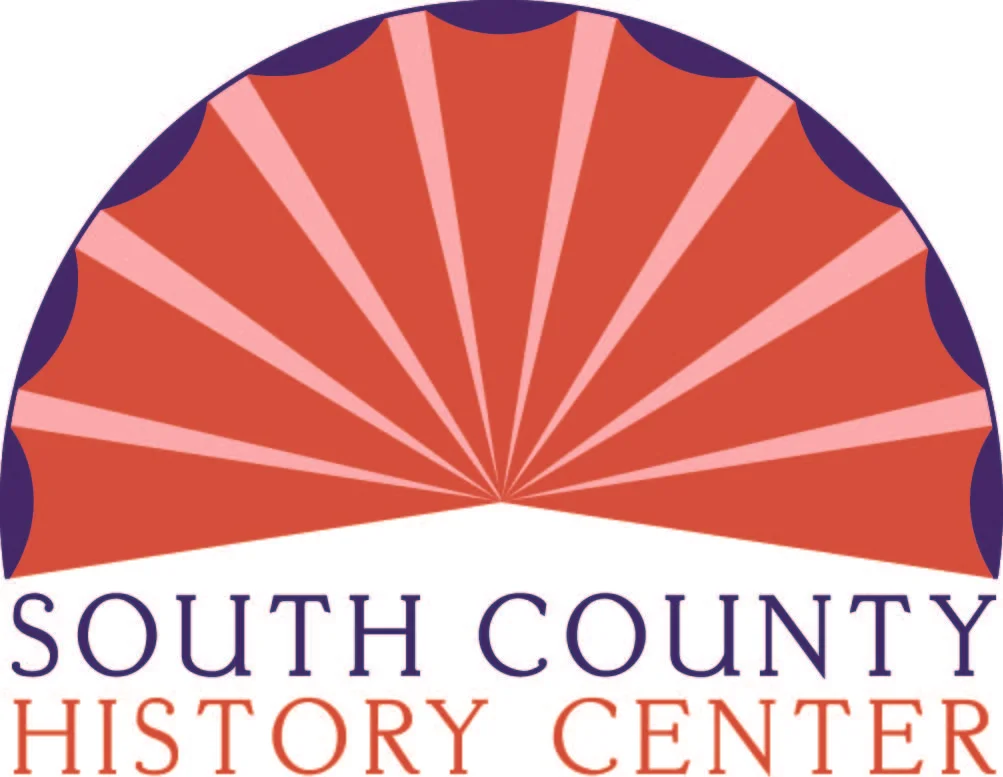How did Baker develop his idea for the mural?
Baker Receives a Commission
A 1937 letter from Ernest Hamlin Baker to Inslee Hopper, regional Section director, acknowledging his reassignment from the Natick post office to the Wakefield post office. Records of the Public Buildings Service, 1801 - 2000, national archives.
In 1936, at the recommendation of Eleanor Treacy, the art director at Fortune, and because the Section judged his work to be of exceptional quality, Ernest Hamlin Baker received a commission to paint a mural for a new post office. Baker was originally assigned to paint a mural for the Natick, Massachusetts post office. As he was a native New Yorker and did not have ties to New England, Baker accepted the Section’s recommendation that artists get to know the community where their mural would be displayed.
The South County Museum, established in 1933 and originally located in North Kingstown, is one place baker may have visited to learn about southern Rhode Island history. DIgital Collections, providence public library.
Just a few days before he embarked on his first research trip, Baker received a letter from the regional director, Inslee Hopper, notifying him that he had been reassigned to the new post office in Wakefield, Rhode Island. Baker changed the destination for his trip to southern Rhode Island and requested the blueprints for the new Wakefield post office. In February 1937, he set off to explore the landscape, history, and culture of southern Rhode Island, and to develop ideas for his mural.
Exhibit Navigation
1: Introduction
2: Ernest Hamlin Baker
3: Great Depression & New Deal
4: Treasury Section of Fine Arts
5: Baker’s Commission & Research
6: Slavery in Southern Rhode Island
7: Baker’s Artistic Process
8: The Finished Mural
9: Wakefield Post Office
10: Why the Mural Matters
11. Share Your Thoughts
12. Further Reading
Baker Visits Rhode Island
A 1936 illustrated map of Rhode Island marking historic sites produced by Rhode Island’s Tercentenary Commission. South County History Center.
Baker’s visit occurred shortly after statewide celebrations marking the 300th anniversary of Rhode Island’s settlement by European colonists in 1636. This was an opportune time for Baker to explore the state – Rhode Islanders had spent the previous year thinking about and celebrating local history. Baker visited Rhode Island four times while creating the mural, and while his exact itineraries are unknown, an illustrated tourists’ map created for the state’s tercentenary gives some clues about popular destinations of historical significance in 1936. Baker most likely traveled from New York by car and probably drove along the coastal highway Route 1 to get to South Kingstown. Many sites marked on the 1936 map are familiar today: Hannah’s Rock, the “Early Home of Oliver Hazard Perry,” the Old Courthouse in Kingston, the Birthplace of Gilbert Stuart, and the South County Museum (then in North Kingstown).
After his first trip, Baker worked up several “theme-approaches” and presented them at a meeting with the Section’s supervisory board in Washington, D.C. The board chose the theme Baker described as “the picturesque life of the Narragansett stock and dairy Planters (1700-1750).”
Baker Develops the Theme
The historic Robinson plantation house in Saunderstown, Rhode Island, was significant AS both local folklore and as a site of enslavement during the 18th century. Initially, Baker depicted both of these themes in his mural concept sketches. The house is now a private residence. From “old houses in the south county of rhode island,” 1932, South COunty History Center.
Baker’s initial sketch demonstrates that he learned a lot about the folklore, legends, and popular histories of the Narragansett Planter class on his early trips to southern Rhode Island, including the legend of Hannah Robinson, Pettaquamscutt Rock, and leisure activities enjoyed by the “Planter class.” The first sketch simply illustrates too many aspects of the area’s colonial life, and Baker needed to refine his focus. To support his decision-making process, Baker likely learned more about Rhode Island’s colonial history from sources like Channing’s “Narragansett Planters: a study of causes” and William Davis Miller’s “The Narragansett Planters.” According to an article Baker wrote after painting the mural, he “grimly determined to confine the main theme to the income-producing sources of the Planter’s wealth and culture,” namely stock, dairy, grain, and wool production, as well as horse breeding, rum distillery, and shipping.
Baker’s research produced a wealth of information – far more than he was able to depict in the final mural. But we can see from his early sketches that he must have talked to many southern Rhode Island residents in depth about their local history.
Baker’s first concept sketch for the Wakefield post office mural, 1937. Baker’s initial depiction of the “picturesque” lifestyle of the Narragansett Planters reflects popular histories he learned about on his visits to southern Rhode Island. Baker Collection, South County History center.
Banner Image: Baker’s mural as published in LIFE Magazine, January 27, 1941
This exhibit is made possible through major funding support from the Rhode Island Council for the Humanities. The Council seeds, supports, and strengthens public history, cultural heritage, civic education, and community engagement by and for all Rhode Islanders.


